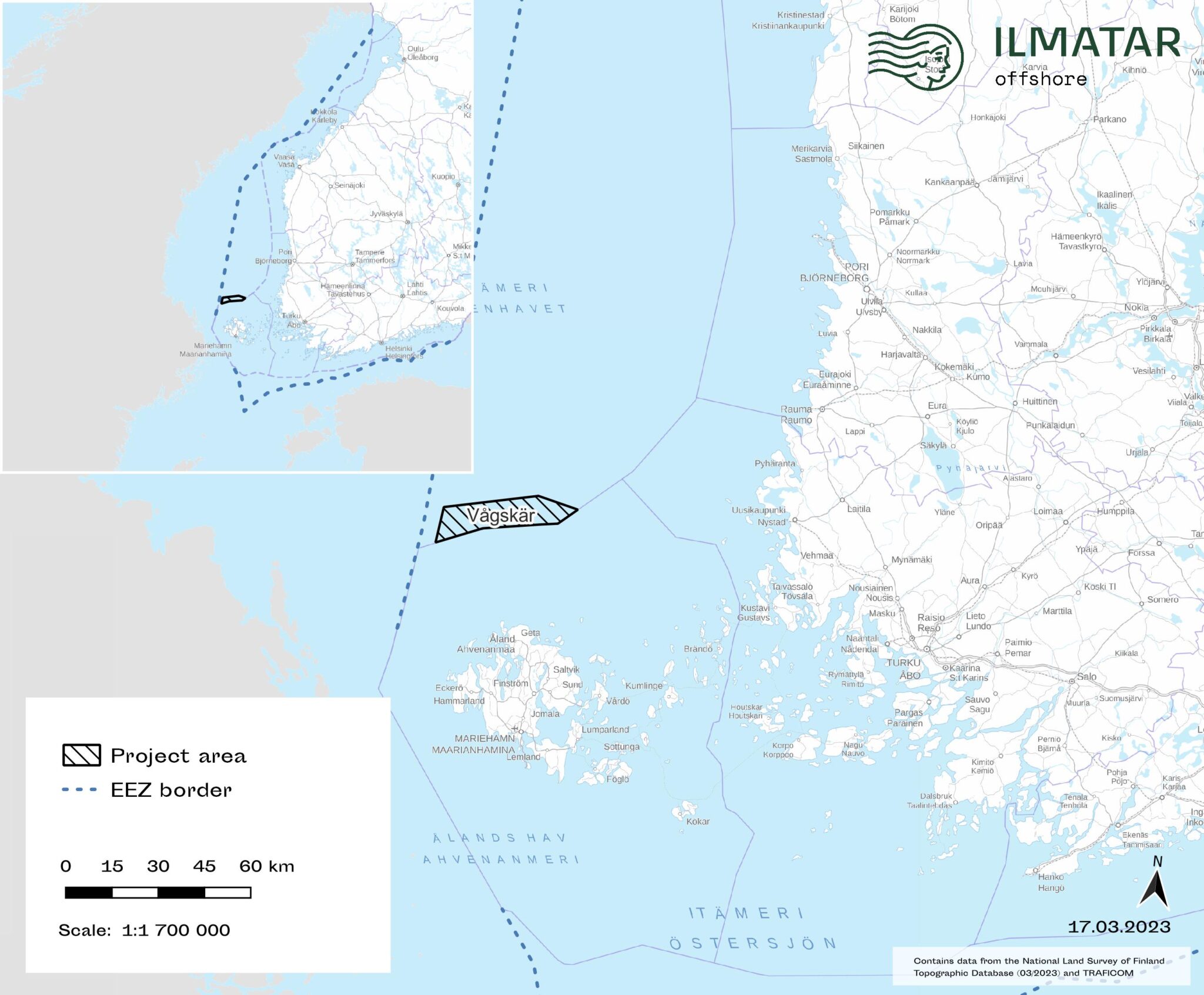Ilmatar Offshore has been granted a seabed survey permit for the new 1.2 GW offshore wind project area Vågskär in the Finnish Exclusive Economic Zone (EEZ). Ramboll Finland is contracted for the environmental impact assessment, and studies are underway.
Ilmatar Offshore has identified a new 367 km2 offshore wind area in the Finnish exclusive economic zone. The project area, called Vågskär is located in the southern part of the Bothnian Sea, about 65 kilometres west of Uusikaupunki, and about 30 kilometres north ofÅland. Vågskär has a potential installed capacity of 1.2 GW, based on 15 MW turbines, the technology already in use today.
A positive statement for further studies was delivered from the Finnish Defence Forces in August 2022, and last week the seabed survey permit was granted by the Finnish Ministry of Employment and Economy.
Awaiting the seabed survey permit, Ilmatar Offshore contracted Ramboll Finland to start the area’s environmental impact assessment (EIA) based on existing data, and this work is already underway.
– In the EIA, impacts to sea nature and other potential impacts will be identified and assessed thoroughly. Cumulative impacts with other projects and potential transboundary impacts to other countries will be an essential part of the Vågskär EIA, says marine biologist, and Leading Environmental Consultant Sanna Sopanen from Ramboll Finland.
Stefan Husa, Leading Expert in Marine Planning at Ilmatar Offshore, is happy to deepen the cooperation between Ilmatar Offshore and Ramboll Finland:
– Ramboll is an established environmental consultant with experience from many marine and offshore wind projects in Finland and offers all the necessary expertise to investigate our project areas. We also create synergies, as Ramboll Finland acts as our EIA consultant also for the Stormskär and Väderskär project areas in the Åland territorial waters.
As part of the EIA process, several field surveys, marine archaeological and biological investigations are carried out to map species that occur in the area, which ecosystems need to be considered and what environmental impacts the wind farm has during the construction, operation and dismantling phase. Also examined are the geophysical character of the area, i.e. the depth of the seabed, sediment type and bedrock depth, and the characteristics of the sea, such as water currents and ice conditions. Another essential part of the EIA work is to investigate existing activities in the area and how they may be affected when the wind farm is built.
The Vågskär area is optimally located close to Ilmatar Offshore’s Stormskär and Väderskär project areas in Åland’s territorial waters, creating further synergies.
– With Vågskär in our project portfolio, we ensure massive energy production in the Nordic region in a very strategic location, says Anna Häger, Regional Manager at Ilmatar Offshore.
Technical and environmental studies will be conducted in the project area in 2023 and 2024. According to the preliminary schedule, the EIA work for Vågskär will be finalised in mid-2025.
Source: Ilmatar
















